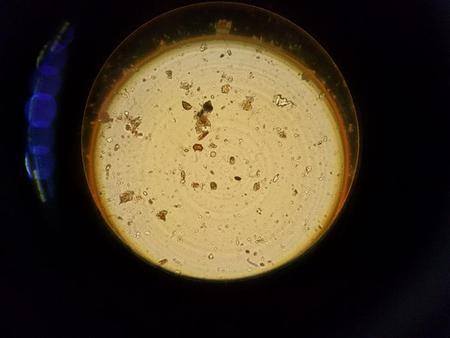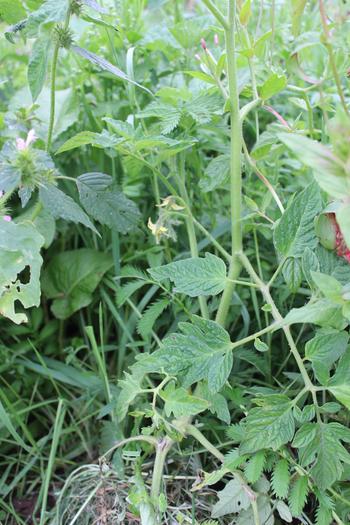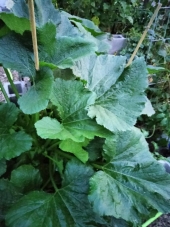
 25
25




“We can complain because rose bushes have thorns, or rejoice because thorn bushes have roses.” — Abraham Lincoln
 12
12






 (well...reading )
(well...reading )  4
4




Ela La Salle wrote:Hello

I'm glad you had such a rewording learning experiences.
I'm a little jealous (but NOT in a mean way!) because my vegetable raised beds garden was a total fiasco.
1. After finally removing (professionally) an aspen tree ....we learned that the stump should have been "smeared/suffocated". It wasn't and the result is that we have hundreds new
aspen trees shooting EVERYWHERE! It's ongoing war and no end in site! The tree was cut down because the tree roots were permeating onto the raised beds after 3 years of being
build.
$10.00 is a donation. $1,000 is an investment, $1,000,000 is a purchase.
 8
8




 9
9




 6
6




 10
10





 13
13




- Tim's Homestead Journal - Purchase a copy of Building a Better World in Your Backyard - Purchase 6 Decks of Permaculture Cards -
- Purchase 12x Decks of Permaculture Cards - Purchase a copy of the SKIP Book - Purchase 12x copies of Building a Better World in your Backyard
 1
1




Cécile Stelzer Johnson wrote:
Thank you for the link
However, that option wasn't feasible as the tree was huge and close to the house. I've read (afterword) that the stump was supposed to be "smothered" with some type of solution right after being cut.
That tree was cut down in very early Spring, and everyone has been pulling every sprouting sucker ever since. Can't use poison because we have a dog and crows.
So, it might take years. I'll be dead by then or permanently bend-over! LOL

 13
13





How Permies works: https://permies.com/wiki/34193/permies-works-links-threads
My projects on Skye: The tree field, Growing and landracing, perennial polycultures, "Don't dream it - be it! "
 13
13




Dirty hands + a sweaty handkerchief = hope for the future.
 11
11




Weeds are just plants with enough surplus will to live to withstand normal levels of gardening!--Alexandra Petri

 4
4




William Bronson wrote:
I had a bumper crop of pears, but the squirrels attacked them, so I picked them early.
They never really ripened, seeming to go from hard as rock to rotting mush.
Works at a residential alternative high school in the Himalayas SECMOL.org . "Back home" is Cape Cod, E Coast USA.





 7
7




Works at a residential alternative high school in the Himalayas SECMOL.org . "Back home" is Cape Cod, E Coast USA.












 3
3




Rebecca Norman wrote:The garden is crowded with dry brittle seed heads of: bachelors buttons, cosmos, dracocephalum (a flower & nice lemon scented herb), marigolds, edible chrysanthemum shungiku, morning glories, columbine, coriander/cilantro, rocket/arugula, red orach, lettuce, red amaranth, hollyhocks, Cal poppies, and more.
Next year is going to be a major weeding burden.
How Permies works: https://permies.com/wiki/34193/permies-works-links-threads
My projects on Skye: The tree field, Growing and landracing, perennial polycultures, "Don't dream it - be it! "





 5
5




Nancy Reading wrote:
Rebecca Norman wrote:bachelors buttons, cosmos, dracocephalum (a flower & nice lemon scented herb), marigolds, edible chrysanthemum shungiku, morning glories, columbine, coriander/cilantro, rocket/arugula, red orach, lettuce, red amaranth, hollyhocks, Cal poppies, and more.
None of those sound much like weeds !
Works at a residential alternative high school in the Himalayas SECMOL.org . "Back home" is Cape Cod, E Coast USA.
 9
9
















 5
5




Thom Bri wrote:I learned that cantaloupes don't actually need full sun. ...... were too many so I uprooted a few and transplanted them under the corn. Well, very surprised that something wilted the ones in full sun, got a few poor melons, but their sisters that had been transplanted grew very well and gave me good fruit. The corn was wide-spaced, they did get direct sunshine part of the day.
How Permies works: https://permies.com/wiki/34193/permies-works-links-threads
My projects on Skye: The tree field, Growing and landracing, perennial polycultures, "Don't dream it - be it! "
 5
5




Nancy Reading wrote:
Thom Bri wrote:I learned that cantaloupes don't actually need full sun. ...... were too many so I uprooted a few and transplanted them under the corn. Well, very surprised that something wilted the ones in full sun, got a few poor melons, but their sisters that had been transplanted grew very well and gave me good fruit. The corn was wide-spaced, they did get direct sunshine part of the day.
Ha!ha! I think you may have discovered two of the three sisters! Have you tried growing beans up your corn too?
 5
5




Cy Cobb wrote:I've learned a lot this year as well.
3) I planted more than 100 onion sets, and lost all but about a dozen to overwatering/rot. I saved seed from the survivors & will see how they do in 2024. (I could use some tips for growing onions from seed in an intermediate daylight zone if anyone has experience?) My best plan right now is to sort of winter sow all of my onion seed in January or so, and let nature sort out the survivors (if any). If anyone knows of good storage onion varieties or landrace/grex's in work for intermediate daylight zone 6b, let me know. Otherwise, I'll slowly be establishing my own as with most things.
 6
6




 6
6





I do Celtic, fantasy, folk and shanty singing at Renaissance faires, fantasy festivals, pirate campouts, and other events in OR and WA, USA.
RionaTheSinger on youtube
 7
7




 5
5




“We can complain because rose bushes have thorns, or rejoice because thorn bushes have roses.” — Abraham Lincoln
 6
6
















 9
9






How Permies works: https://permies.com/wiki/34193/permies-works-links-threads
My projects on Skye: The tree field, Growing and landracing, perennial polycultures, "Don't dream it - be it! "
 3
3




“We can complain because rose bushes have thorns, or rejoice because thorn bushes have roses.” — Abraham Lincoln
 2
2




I do Celtic, fantasy, folk and shanty singing at Renaissance faires, fantasy festivals, pirate campouts, and other events in OR and WA, USA.
RionaTheSinger on youtube
 1
1








--
"Whitewashed Hope: A Message from 10+ Indigenous Leaders and Organizations"
https://www.culturalsurvival.org/news/whitewashed-hope-message-10-indigenous-leaders-and-organizations
 4
4




Jen Fulkerson wrote:I learned that even though it's great to learn new things, and try different techniques, I also have to trust myself, and hold true to my beliefs.
 2
2




I do Celtic, fantasy, folk and shanty singing at Renaissance faires, fantasy festivals, pirate campouts, and other events in OR and WA, USA.
RionaTheSinger on youtube

|
Never regret anything that made you smile. - Mark Twain / tiny ad
Support permies and give beautiful gifts to gardeners: permaculture playing cards.
https://gardener-gift.com/
|







